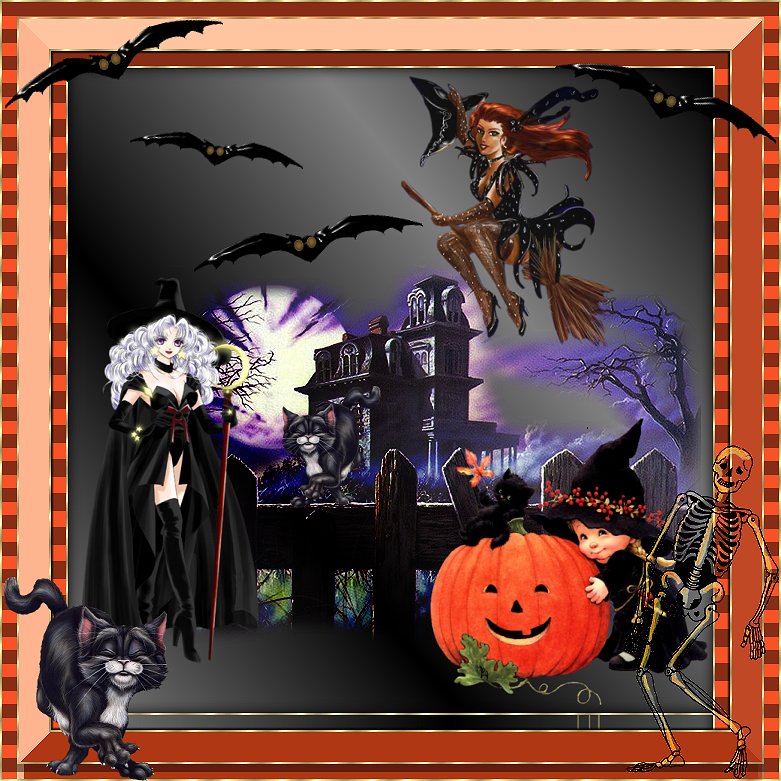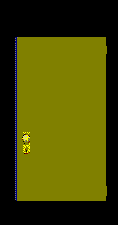|




The history of Halloween consists of religious
traditions, sacrifices
and folklore, While some of these ancient traditions are strange,
it is interesting to know the roots of the current practices of Halloween.
Halloween like Easter and many other festivals started long ago
and over the years slowly changed to how they are celebrated today.

Halloween and Hallow E'en as it is known in Ireland both mean All Hallows Eve
which is the night before what is known as "All Hallows" ... "All Hallowmas"
... "All Saints ... "All Souls Day" which is on November 1st.
In the early English years Hallow meant "sanctify". Some religious groups
honoured all saints in heaven known or unknown on "All Hallows Day"
February 21 which was the end of the Roman year. This was basically done with
sacrifices being made in honour of the dead. "All Saints Day" was introduced
in the 7th century by Pope Boniface IV to replace the pagan festival of the dead
and was observed on May 13th which was later changed to November 1st as it is
today.

Halloween as it is celebrated today in America owes its
origin to the ancient
pre-christian festival called "Samhain" pronounced "sow-in" with sow rhyming
with cow,
which was celebrated by the Celts in Ireland, Wales and Scotland.
In Ireland this festival was called Samhein or La Samon, meaning The Feast of
the Sun.
In wales it was known as Nos Galen-gaeof meaning The Night of the Winter
Calends.
In Scotland it was known as Hallowe'en

According to the Irish English dictionary published by the Irish Texts Society:
"Samhain, All Hallowtide, was the feast of the dead in Pagan and Christian
times,
signalizing the close of harvest and the initiation of the winter season,
lasting till May
Halloween was brought to North America by immigrants from Europe who would
celebrate
the harvest around a bonfire, share ghost stories, sing, dance and tell
fortunes.
Orange and Black are the colours symbolising Halloween as orange symbolises the
full
Harvest and black is associated with darkness and death

One of the main customs associated with Halloween is Trick or Treat this is also
believed to originate from an old Irish practice where people went door to door
collecting
money and food etc in preparation for the festival of St Colombus. There was
also another
custom where people begged for what were known as soul cakes in exchange for
promises of
prosperity or protection from bad luck. With this custom also came the fairies
as when people
went door to door begging for treats upon failure to receive any treats a
practical joke would
be played on the owner of the house hence the term "Trick or Treat" As the
fairies were supposedly
abroad this night milk or food would be frequently left out for them on the
steps of the house so as
the owners of the house could gain their blessings for the coming year. Many
people also left out what
was known as a dump supper for the spirits of the deceased.

The other popular activity for Halloween is making the
traditional Jack-O-Lantern which was originally
made using hollowed out turnips with a candle inside to ward of evil spirits.
The celts upon arriving
in America found an abundance of pumpkins. The ancient Celts also believed the
spirits and ghosts of
the dead roamed the country side so they started to wear customs and masks to
avoid being recognised
as a human. These are traditions which have been carried on over the years
although the reasons why
have dramatically changed today.

Today Halloween is celebrated in America and other countries around the world
and is now more a fun
time for the majority, with the Trick or Treat being one of the main traditions
practised.
Making of Jack-O-Lanterns using large orange pumpkins being the other tradition
Halloween is the 2nd most commercially
successful holiday, with Christmas being the first. People spend as much as over
$2.5 billion during
Halloween on candies, costumes, decorations and parties.



|
|
|
|
|
|
| |